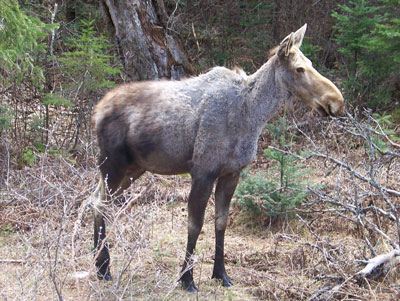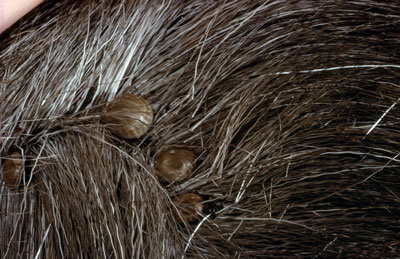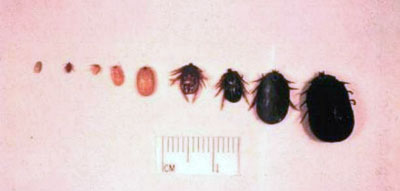ALGONQUIN PARK
Moose Hair Loss Survey
.
|

Moose (Alces alces) are the largest animal
in Algonquin
Park and a crucial part of the ecosystem,
but significant
mortality-events of Moose have been
associated with
Winter Tick (Dermacentor albipictus)
infestations in the
past. Moose with heavy winter tick
infestations groom
vigorously by licking, biting, or scratching
against a tree,
which results in severe hair loss that can
lead to
decreased fat reserves, and in extreme
cases hypothermia.
Winter ticks (and the associated hair loss),
plus normal
winter coat shedding is what make Moose
appear "scraggly"
in the spring. To assess the severity of winter
tick infestation,
Algonquin Park staff have been conducting
aerial Moose Hair
Loss Surveys since 1984. An index is used
to measure the
severity of tick infestation based on the
degree of hair loss,
and make predictions about the potential
impact to the local
Moose population.
2013 Survey Results
in Algonquin Park on March 23 and 24. A total of
137 Moose were assessed for severity of hair loss,
and ranked into one of five categories. The Hair
Loss Severity Index (HSI) from this survey was
calculated to be 1.88, which is slightly lower than
the average HSI (1.90) over the
history of the survey (1984-2012). A below average
HSI is not
associated with winter tick related mortality events,
and a significant
effect on the Moose population is not expected this
year. This result
was not anticipated based on the current moose
population and
previous spring temperatures, both of which though
t to be favourable
for tick populations. Generally, an early spring
(like the one we
witnessed in 2012), late fall, and relatively high
Moose population
bodes well for the ticks.
Why Were There Not as Many
Ticks As
Expected This Year?

Without a detailed study it is difficult to say
for sure,
but there
could be a number of environmental factors at play.
First of all,
2012 was definitely a year of weather anomalies
– not only
did it have the earliest ice-out date on Lake
Opeongo in the
history of our records, but March actually had
a warmer average
temperature than April (according to
Environment Canada),
which is highly unusual! Warm spring
conditions with no snow
are supposed to be very favourable for the
female ticks when
they drop off the moose, full of blood and
ready to lay eggs.
However, you might also recall that April
had some very cold
temperatures with a hard frost late in the
month, which we know
affected the blossoms on fruit trees, and
may have also had a
negative impact on tick eggs. But the other
major weather
anomaly that we witnessed in 2012 was
the drought. By late
July there were extreme fire indices, and
a drought that caused
Algonquin Park to impose a Restricted
Fire Zone (fire ban).
This may also have an impeded the growth
of the tick population,
as droughts have been shown to affect other
tick species. A
combination of these factors may have limited
tick numbers in
2012, or it could be something altogether
different that we have
not documented yet. Until research looks
further into how Moose,
ticks, and weather interact, consider it a
natural history mystery!
How You Can Help!
Algonquin Park staff are always interestedin the health of the local
Moose population and we would be particularly
interested in any
sightings and pictures of moose with hair loss
this spring. If possible,
pleasesend your observations along with the
time, location, number
of moose, male/female, adult/calf, % hair loss,
a picture (if possible),
and any other valuable information











No comments:
Post a Comment